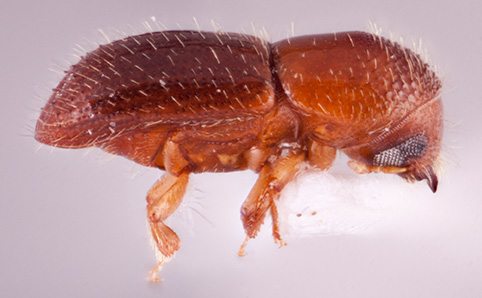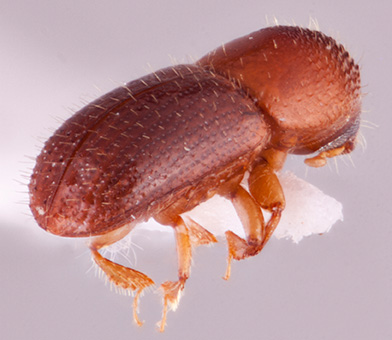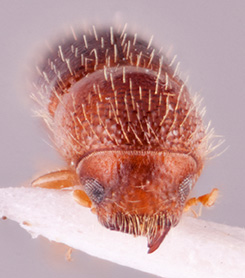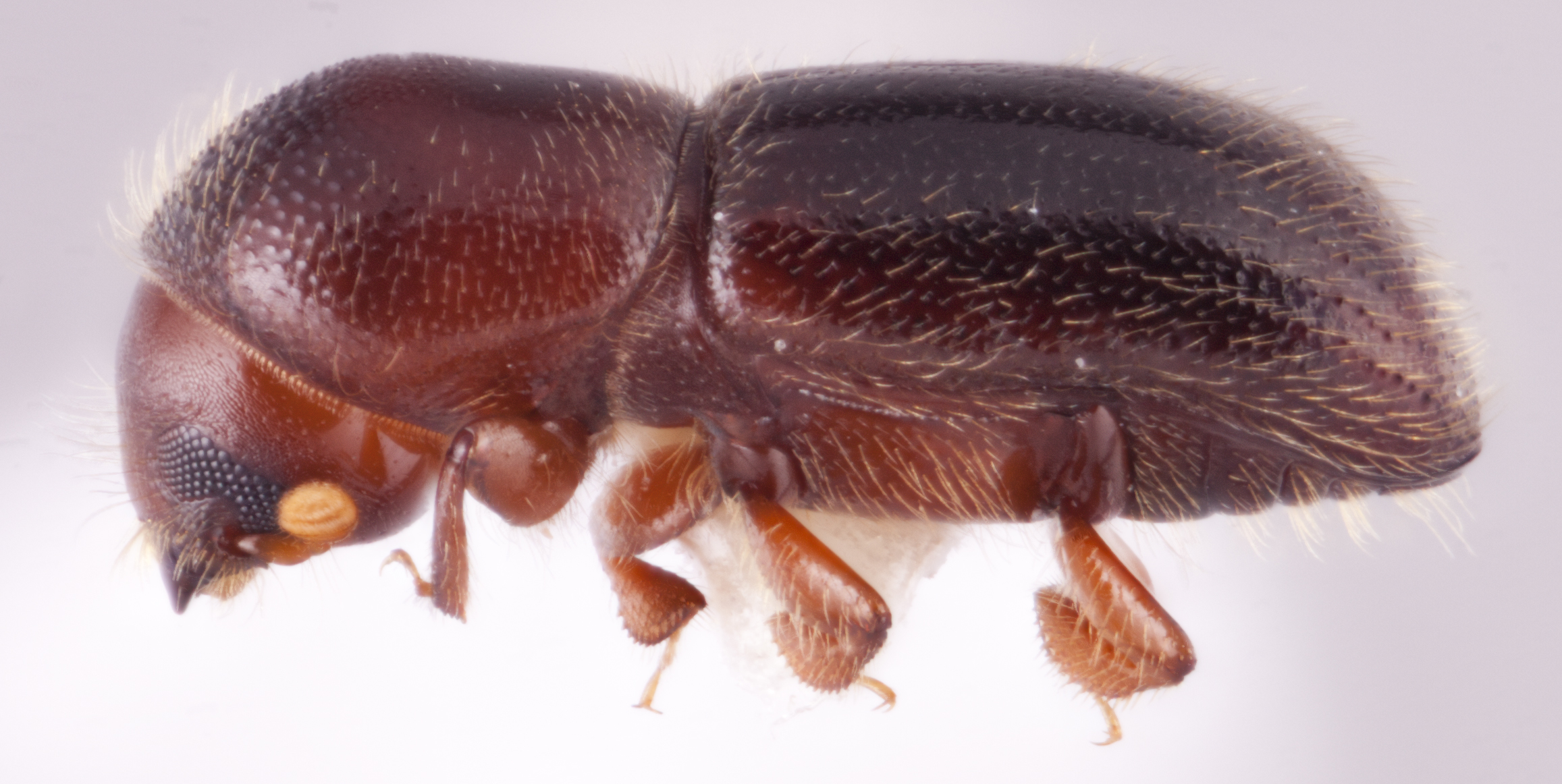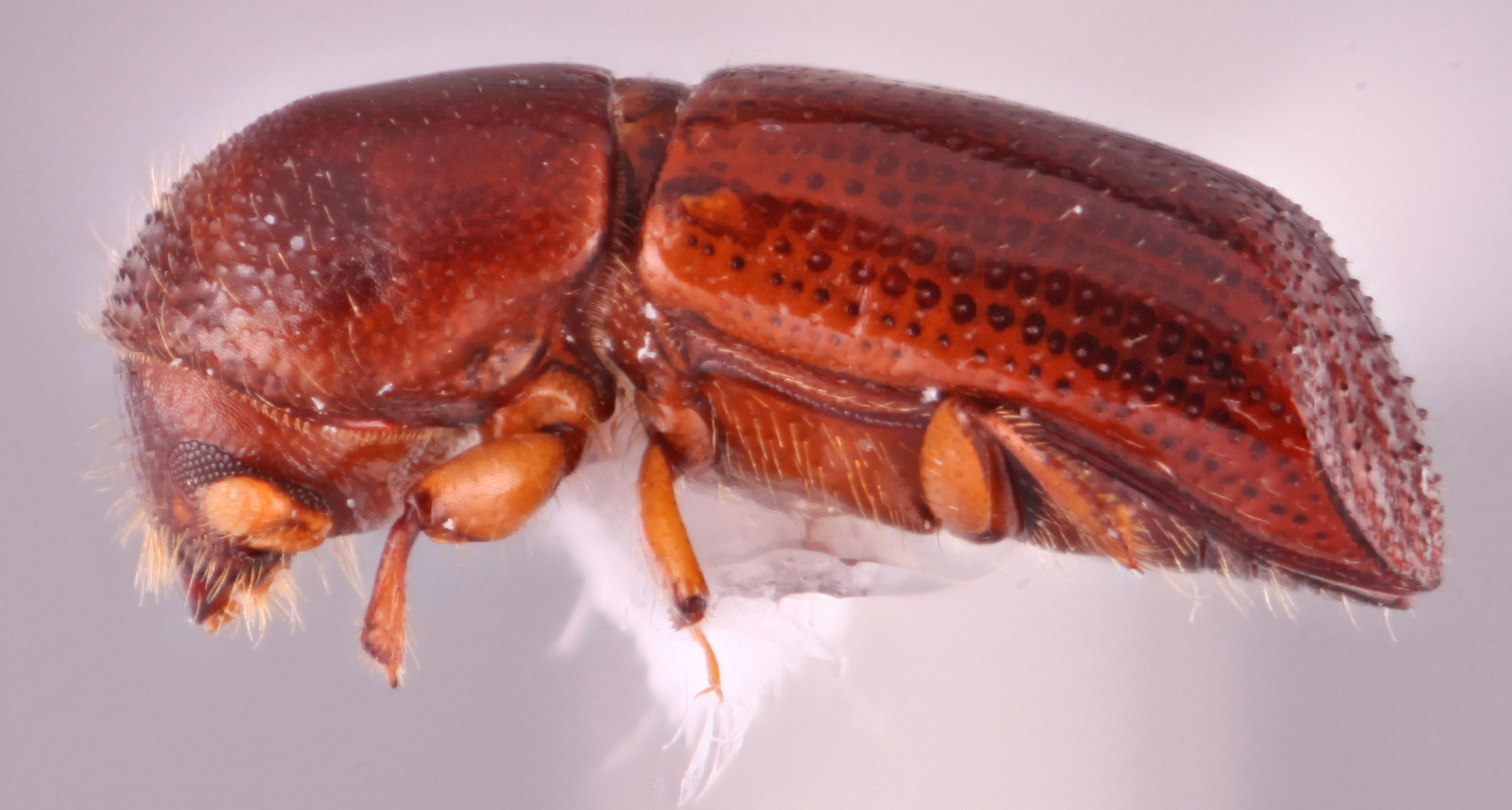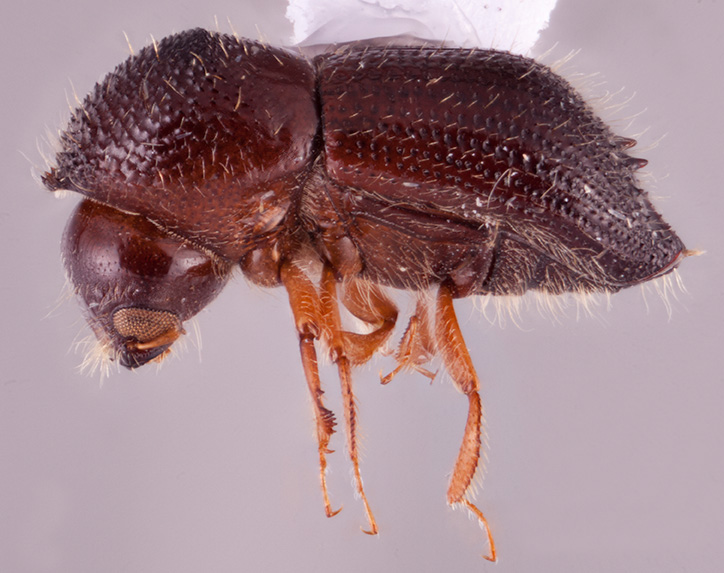Xyleborus
|
Xyleborus affinis; R.K. Osborn |
|
Xyleborus affinis; R.K. Osborn |
|
Xyleborus affinis; R.K. Osborn |
|
Xyleborus affinis; R.K. Osborn |
|
Xyleborus opacus; R.K. Osborn |
|
Xyleborus insidiosus; S.M. Smith |
|
Xyleborus bidentatus; R.K. Osborn |
Taxonomy
Xyleborus Eichhoff, 1864: 37.
Synonyms
Anaeretus Dugès, 1888: 141. Hagedorn, 1910b: 98.
Progenius Blandford, 1896a: 20. Hagedorn, 1910b: 98.
Mesoscolytus Broun, 1904: 125. Beaver, 1998: 181.
Boroxylon Hopkins, 1915a: 58. Schedl, 1952c: 162.
Diagnosis
1.9−3.9 mm long, 2.5−3.51 times as long as wide. Xyleborus is distinguished by a combination of homoplastic characters which include the scutellumscutellum:
a shield-like sclerotized plate located at the midpoint of the elytral base
flush with elytraelytron:
the two sclerotized forewings of beetles that protect and cover the flight wings
and flat; mycangial tufts are absent; laterallateral:
pertaining to the side
 margin of pronotumpronotum:
margin of pronotumpronotum:
the dorsal surface of the thorax
obliquely costate; procoxae contiguous; pronotumpronotum:
the dorsal surface of the thorax
from dorsaldorsal:
of or relating to the upper surface; opposite of ventral
 view rounded frontally (types 0, 2, 6, 7), rarely quadratequadrate:
view rounded frontally (types 0, 2, 6, 7), rarely quadratequadrate:
square-like in shape
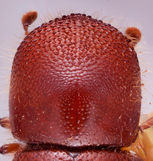 (type 4 in X. bidentatus); elytralelytral:
(type 4 in X. bidentatus); elytralelytral:
pertaining to the elytra
discdisc:
the flat central upper surface of any body part (e.g. pronotum and elytra) longer than declivitydeclivity:
longer than declivitydeclivity:
downward slope of either the pronotum or elytra
 ; elytralelytral:
; elytralelytral:
pertaining to the elytra
discdisc:
the flat central upper surface of any body part (e.g. pronotum and elytra) strial and interstrial punctures seriateseriate:
strial and interstrial punctures seriateseriate:
arranged or occurring in rows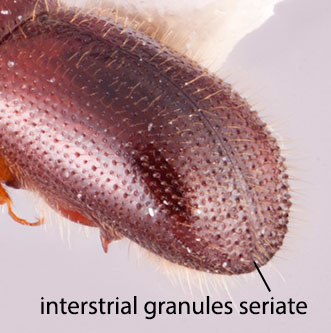 ; pronotalpronotal:
; pronotalpronotal:
pertaining to the pronotum
discdisc:
the flat central upper surface of any body part (e.g. pronotum and elytra) alutaceousalutaceous:
alutaceousalutaceous:
engraved fine reticulation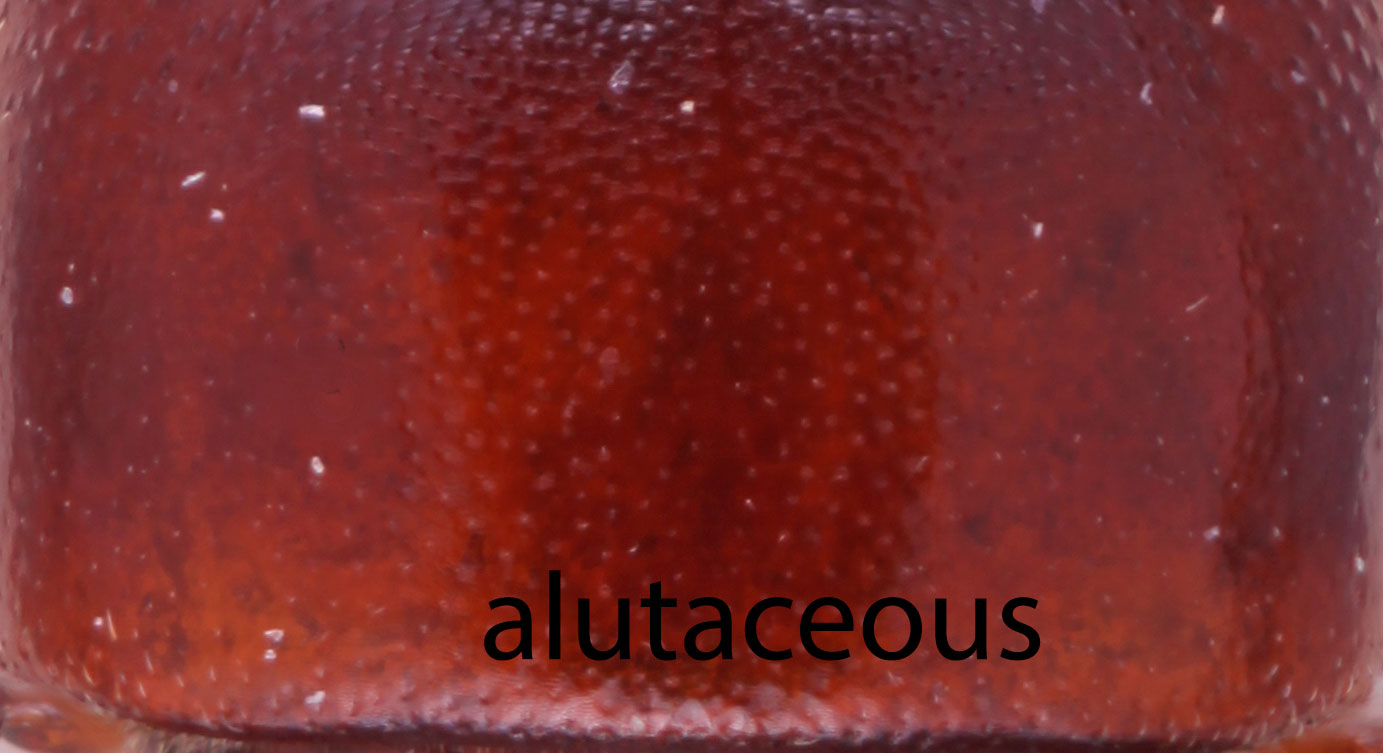 ; posteriorposterior:
; posteriorposterior:
toward the rear end; opposite of anterior
 face of the protibiaprotibia:
face of the protibiaprotibia:
tibia of the first pair of legs
flat and unarmed; antennalantennal:
pertaining to the antennae
club typically obliquely truncateobliquely truncate:
nearly truncate but rounded not flat in lateral view
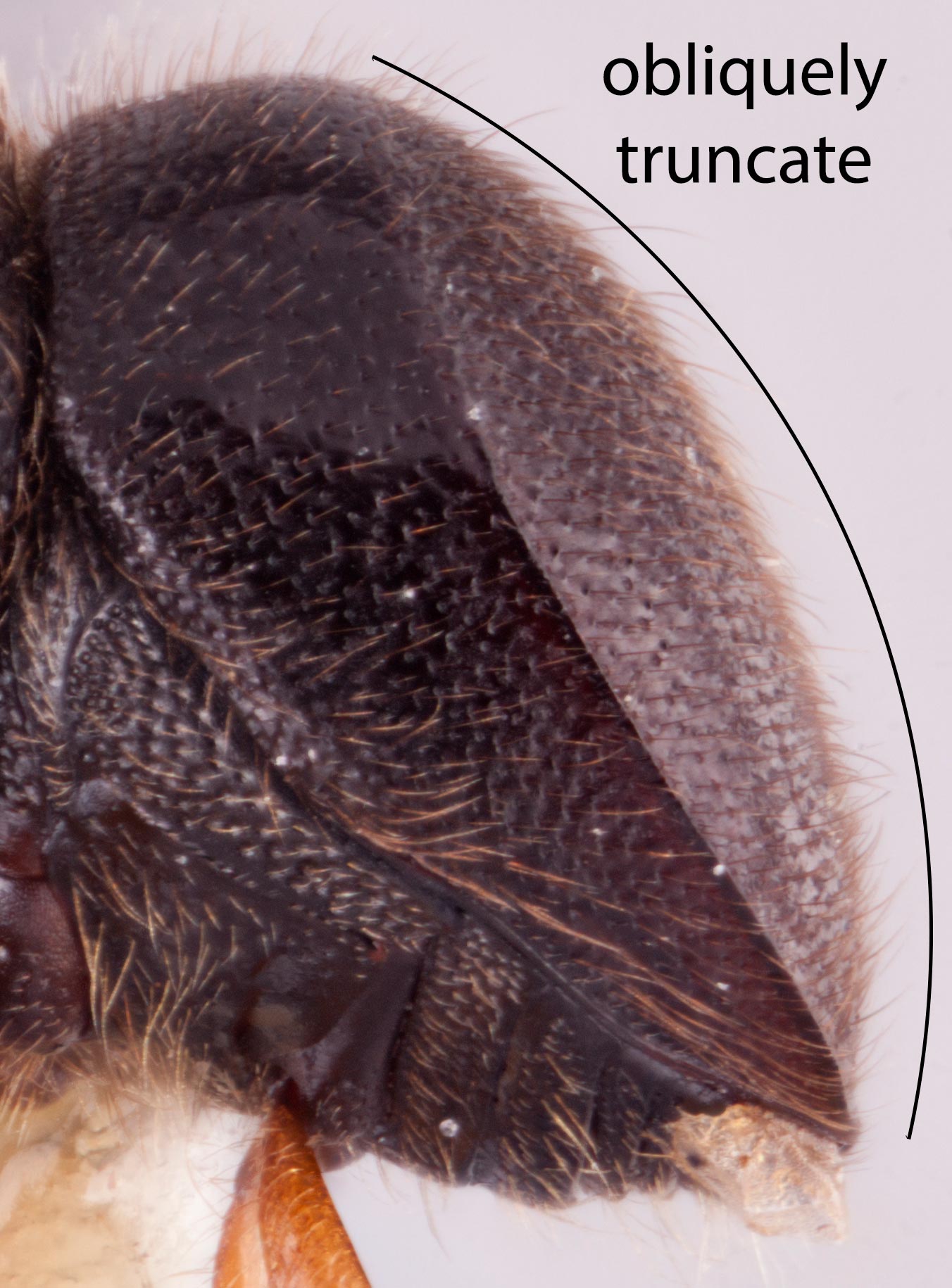 with segment 1 nearly covering the entireentire:
with segment 1 nearly covering the entireentire:
without marginal teeth or notches
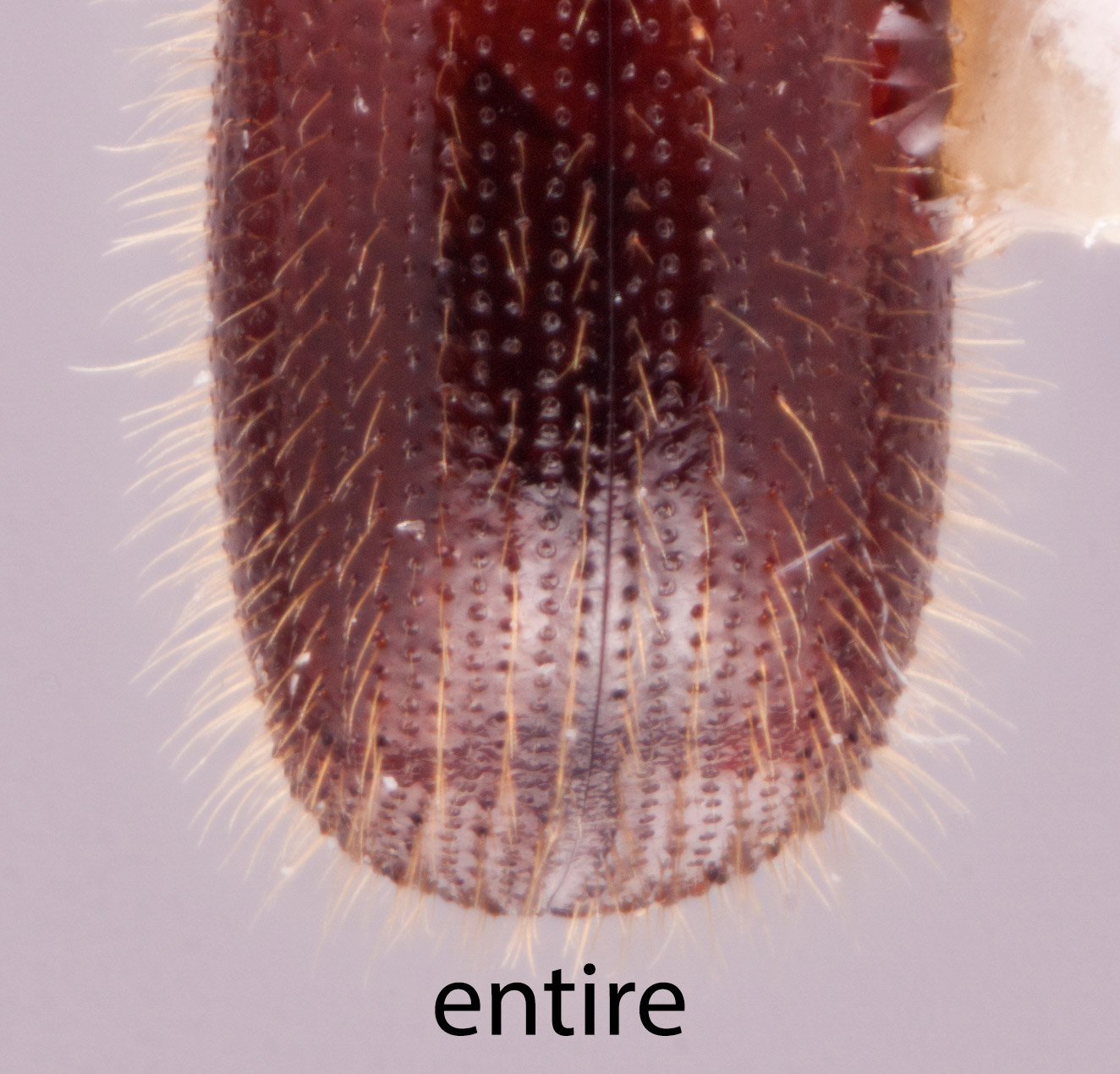 posterior face (type 2), or flattened (type 3); antennalantennal:
posterior face (type 2), or flattened (type 3); antennalantennal:
pertaining to the antennae
funicle 4-segmented; and anterioranterior:
the front or forward; opposite of posterior margin of pronotumpronotum:
margin of pronotumpronotum:
the dorsal surface of the thorax
typically unarmed (serrations on a carinacarina:
an elevated ridge or keel, not necessarily high or acute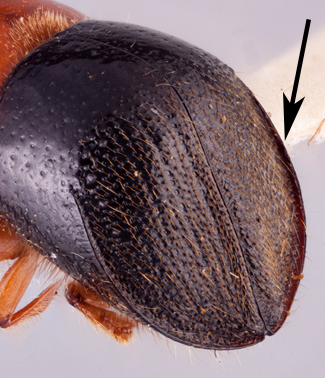 in X. bidentatus).
in X. bidentatus).
May be confused with
Cryptoxyleborus, Heteroborips, Planiculus, Stictodex, and Terminalinus
Distribution
widespread throughout temperate and tropical regions of the world
Gallery system
The gallery system usually consists of irregularly branched tunnels, usually in one horizontal plane, but sometimes spreading into three dimensions, and without brood chambers. However, given the heterogeneity of the genus, it is not surprising that there are variations on this pattern. In some species, small brood chambers may be present.
Remarks
Xyleborus is the largest genus and is in need of revision. Most Xyleborini species were originally described in Xyleborus, and revision of Xyleborus is ongoing on a regional basis.

